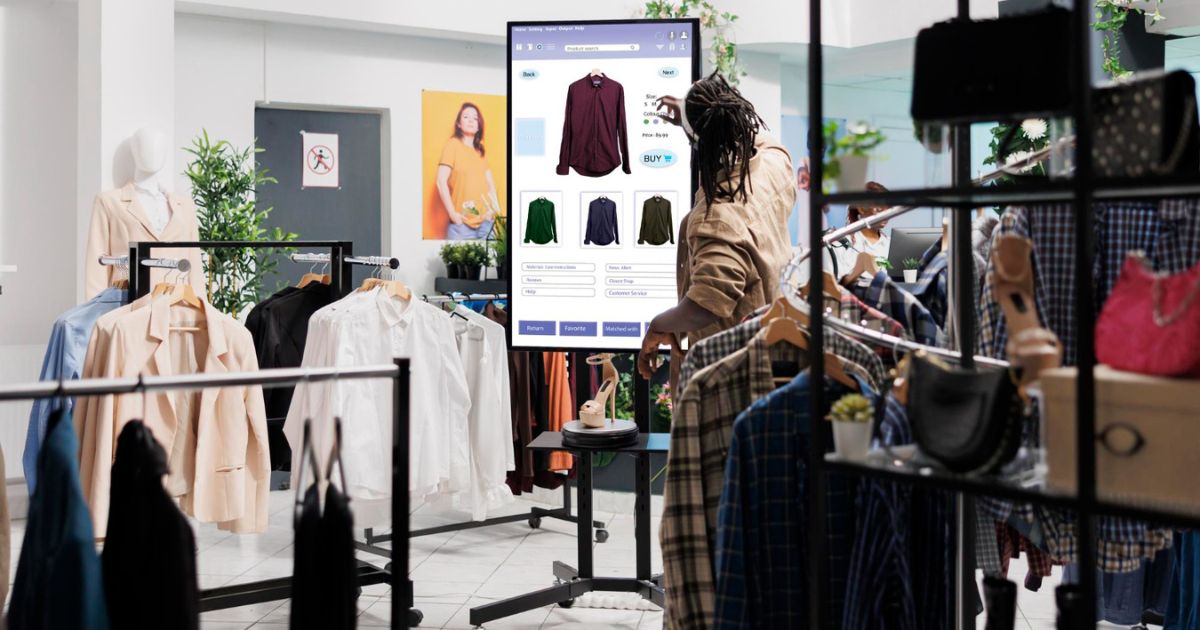Do you want to master the art of retail management? Have you ever thought about what distinguishes a successful retail business from others? HS Brands Asia is India’s most reputed mystery shopping company that helps and guides you to attain growth and strive for sustained success.
In this blog, we will explore the fundamental types and strategies of retail management which include visual merchandising, inventory management, store operation management, and many more. We will also delve into the benefits of partnering with us. So let’s get started!
Types of Retail Management
1. Visual Merchandising
Visual merchandising is known for capturing the customer’s attention and driving the ultimate sales. It is a strategic retail practice involving the presentation of products to captivate the customer and engage with them. It is the blend of marketing, design, and psychology to create a captivating and long-lasting in-store experience. But it is much more than merely laying the products on the shelf.
Visual merchandising is how a brand creates an emotional connection with the customer through storytelling. It encompasses elements like store layout and design, window displays, visual elements, signage and graphics, and color psychology. These elements together work to tell a resonating story, evoke customers’ emotions, and create a bond with them.
Visual Merchandising’s Impact on Retail Sales
The impact of visual merchandising on sales is significant. It is an essential factor of the brand’s strategy to create a place in the customer’s heart. Here’s the impact of visual merchandising on retail sales:
Increased Foot Traffic: Visual merchandising is a powerful tool to increase the foot traffic of retail establishments. An attention-grabbing window display or storefront creates curiosity in the minds of the passersby and interviews them to step in. This visual appeal compels the potential customer into the retail store.
Enhanced Customer Experience: When customers see a store with pleasing aesthetics, a warm atmosphere, and a well-designed layout, they are more likely to have a positive shopping experience. This experience benefits the retail owner since the customers then stay longer in their stores and may make more purchases.
Highlighting the Featured Products: Visual merchandising is the best way to highlight a specific product and promotion through creative displays and strategic placement. When retailers highlight a particular item, they predominantly outline the project’s desirability and feasibility. It ultimately boosts the chances of a product being noticed and leads to higher revenue.
Building a Brand Identity: Building a brand identity demands consistency in design, messaging to foster brand recognition, and more. When a store consistently carries the brand’s essence, it creates its place in the heart of the customer. This emotional connection leads to repeat purchase and boost the brand’s reach.
2. Inventory Management
Inventory management is the foundation of profitable and efficient retail operations. It is about supervising the store’s stock of products to ensure the correct items in the right quantity are available for smooth and seamless operation. It deals with the management of the stock to make sure of how much to keep in hand.
The importance of inventory management in retail management must not be overlooked. Its role encompasses optimizing sales, ensuring customer satisfaction, facilitating marketing, and managing pricing. The essence of inventory management lies in optimizing inventory levels, minimizing stockouts, balancing inventory costs, and accurately forecasting and streamlining the supply chain.
Inventory Management Impact on Retail Sales
Effective inventory management has a deep impact on retail sales. It influences the customer’s journey from beginning to end. The impact of inventory management on retail sales includes:
Boosted Customer Satisfaction: Inventory management ensures that products are available when the demand arises from the customers. Stockouts may lead to loss in sales and frustration in customers, while proper stocks lead to customer loyalty and satisfaction.
Sales Optimisation: A well-maintained inventory management allows retail owners to carry the right and in-demand combination of products. Optimizing the product selection leads to more sales opportunities and higher revenues.
Price Management: Inventory levels also affect the pricing strategies. Scarcity of products may lead to higher prices while overstocked items may likely be discounted. Profound inventory management allows retail owners to maintain competitive prices.
Marketing and Promotions: Inventory management is crucial in a retailer’s marketing and promotion strategies. It provides invaluable insights into how to design tailored marketing and sales campaigns. When retailers monitor the inventory level, they strategically plan product promotions for seasonal trends.
3. Customer Relationship Management (CRM)
Since maintaining strong customer relationships is significant to survive in this competitive retail world, Customer Relationship Management (CRM) is a strategic approach to connecting with customers, understanding their preferences and needs, and tailoring personalized experiences. CRM surpasses the sales transactions and includes every engagement of the customer with the brand, either online or offline.
CRM leads to higher customer retention, personalization, data-driven decisions, cross-selling and upselling, and boosted customer service. Employing well-devised CRM strategies results in long-term business success. The future trends of CRM in retail management include AI, voice commerce, blockchain, and IoT integration.
Both CRM and CEM go hand in Hand CRM. (Customer Relationship Management) and CEM (Customer Experience Management) are two essential strategies in the realm of customer-centric business practices. While CRM is instrumental in managing customer relationships and increasing efficiency, CEM takes a more holistic approach
Practises for Implementing CRM in Retail Management
Implementing Customer Relationship Management (CRM) is crucial to building and maintaining strong relationships with customers in the retail business. Here are some of the top practices for implementing CRM in retail management:
Set Clear Objectives: Before implementing CRM practices, it is indispensable to set clear objectives. You must determine what you want to accomplish with CRM like enhancing customer service or boosting customer retention. Having defined objectives helps your strategy to attain success.
Understand Your Customer: Once you have established clear goals and objectives, it’s time to understand your customers. You must analyze their behavior, preferences, and demographics to create comprehensive customer profiles. Understanding your customers helps you to create offerings that resonate with your customers effectively.
Choose the CRM Software: Since there are many CRM software available, you must choose the appropriate one that suits your retail business. You may consider factors like integration capabilities, sociability, cost, and user-friendliness to choose the best that allow you to access customer’s data.
Data Quality: Maintaining high-quality data is one of the topmost goals of every retail business. You must regularly update your customer information to ensure authenticity and accuracy in data. Furthermore, you must integrate your CRM software with other systems and tools to enable real-time sharing.
4. E-commerce and Omni-channel Retailing
Omni-channel retailing and e-commerce have predominantly reshaped the retail industry. It dominates the retail industry due to its accessibility, convenience, and potential for global reach. E-commerce platforms enable 24/7 operations of goods and services surpassing geographical boundaries.
On the other hand, omnichannel retailing takes e-commerce further by adding multiple sales channels into one. Since customers engage with a brand through multiple touchpoints like social media, websites, physical stores, mobile apps, and more, it unifies such channels to ensure a holistic customer journey.
Strategies for Managing E-commerce and Omni-channel Retailing
Employing e-commerce and omnichannel retailing strategies is crucial to attaining retail success. Such strategies enable retailers to keep up with the ever-changing and stay competitive in the retail world. The strategies for managing e-commerce and omnichannel retailing include:
Robust E-commerce Platform: The key to smooth and seamless e-commerce management lies in building a robust e-commerce platform. It begins with creating a user-friendly and efficient e-commerce platform that must consider user experience (UX), responsive design, security, payment options, and content management.
Data Driven Decisions: Data is the foundation of seamless commerce management. Employing data analytics helps in personalizing the customer experience and optimizing operations. Such data analytics include customer analytics, inventory management, A/B testing, and pricing strategies.
Invest in Digital Marketing: If you want to drive traffic and increase your e-commerce sales, there is no better alternative than investing in digital marketing. A well-designed digital marketing strategy optimizes your website’s content to rank higher in the SERP. Additionally, you may utilize paid ads to drive traffic to your product pages.
Omni Channel Retailing: As discussed, Omni channel retailing creates a smooth shopping experience across all the customer touch points. The key strategies for omni-channel retailing include unified customer data, inventory visibility, seamless return, and personalized engagement.
Benefits of Partnering with HS Brands Asia
If you want to excel in real management, there is no better option than partnering with HS Brands Asia! HS Brands Asia is a reputed mystery shopping company that helps businesses like yours attain your goals. We have a vast network of competent mystery shoppers who possess comprehensive knowledge of the retail locations to ensure every aspect of your retail business is evaluated.
We provide you with detailed reports created by our expert evaluators that equip you with actionable insights to make well-informed decisions about your business. Furthermore, our real-time analytics help you to keep up with the retail landscape to stay ahead of the competition.
Beyond these, our mystery shopping programs are thoroughly customizable to fit your unique needs and goals. Altogether, we have high standards of professionalism and ethics in the mystery shopping landscape. We prioritize data security, and confidentiality and give you peace of mind that your business’s sensitive information is in the right hands.
Conclusion
Mastering the art of retail management, requires a set of well-laid efforts like smooth inventory management, understanding customer behavior, and having effective team leadership to survive and ace this competitive industry. HS Brands Asia’s Mystery Shopping helps and guides you with successful retail management strategies through retail mystery shopping to create an unparalleled customer experience and foster customer loyalty. Attain your retail goals with HS Brands Asia!












